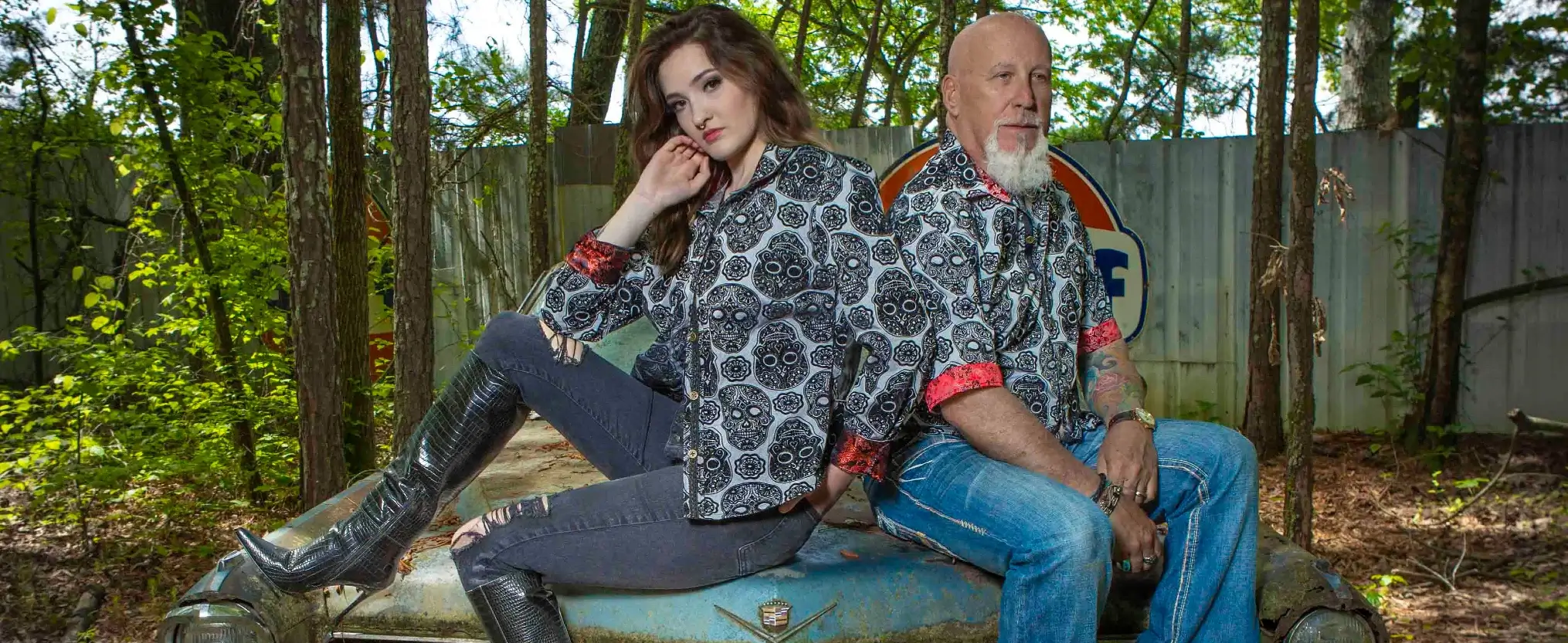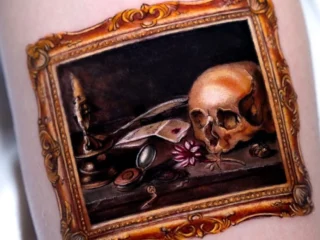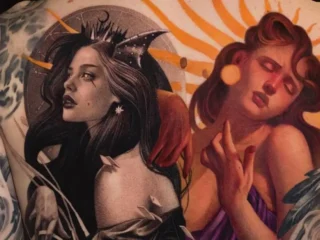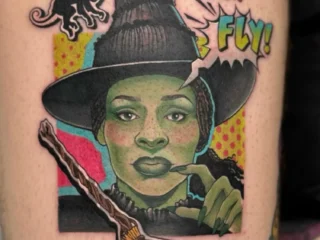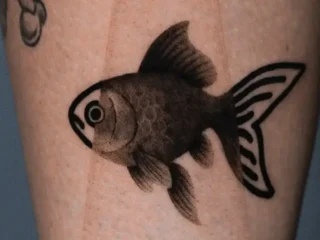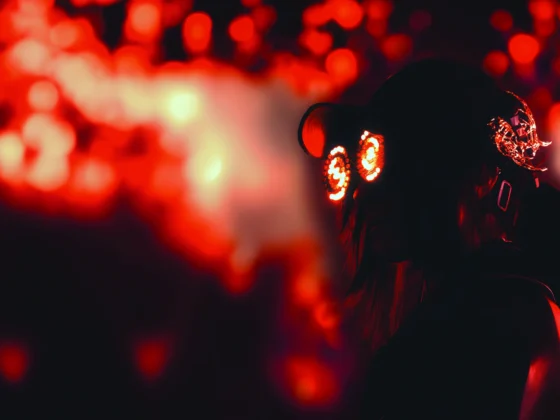Inked Mag Staff
May 19th, 2016
EXCLUSIVE: Premiere of Mesplé’s ‘Killing Time’
Behold the exclusive world premiere of Mesplé’s “Killing Time.” When is the last time a piece of art made your synapses explode? If it’s been a while then you are…
Behold the exclusive world premiere of Mesplé’s “Killing Time.”
https://www.youtube.com/watch?v=UBU6iVIQqDM
When is the last time a piece of art made your synapses explode? If it’s been a while then you are reading this description before clicking play on the video above, just go ahead and do that now.
It isn’t very often that art can alter your mind in such a way as Mesplé’s technology-mediated sculpture. Through the application of ferrofluid and magnetics within two minatory symbols: the human skull and hourglass, he has created a masterpiece that is enthralling aesthetically but also forces you to look away from its augustness and inward into your own mortality.
We are proud to present the piece that stands at 78″ x 33″ x 33″. The materials are bronze, aluminum, steel, glass, electromagnets, ferrofluid, microcontrollers and sensors. For more insight into it and the mind of Mesplé please read the following interview.
Why do you think hourglasses are so ominous?
Mesplé: Time is something that is very hard to put into perspective and an hourglass—in a weird way—shows time in terms that can be measured. It can either suck you into watching time totally evaporate or create anticipation about it ending so quickly. The more sand that falls to the bottom, the more clearly you can see through the glass at the top. That reminds me of real life experiences. It’s an interesting form in that it provides a lot of different ways to look at it and relate.
What does “Killing Time” symbolize to you?
Mesplé: I want the sculpture to make you think about your relationship with time at that moment. A lot of people think of time as the end-all, but I feel like time is a gift I’ve been given that enables me to do the things I need to do. When you get closer to the sculpture, the magnetism increases and therefore the pull of the fluid. So it appears that the closer you get, the more you’re playing with fire with your time. It has sort of a looming effect that gives a viewer pause and some thought—even after he or she has parted ways with the piece.
What do you hope a viewer takes away from seeing your piece?
Mesplé: I always want viewers to leave with a sense of awe. When people see my work they usually are drawn in by the materials or craftsmanship and then they start to wonder what it is and how it [functions]. It’s nice when my work helps people to look at their creative intake of what’s out there in the world and realize that my work is doing something they have not seen before.
Why did you decide to work with black ferrofluid for “Killing Time?”
Mesplé: I have done multiple projects with ferrofluid in the past, I know its behavior and couldn’t achieve the affect of this piece the same way I can with ferrofluid. The physical properties of the material help it do what I need it to.
Other than the fluid, what was the second aspect of “Killing Time” you visualized?
Mesplé: I knew I wanted to create a skull where the fluid would jump into the mouth. The rest of the piece really unfolded over time. I always like to conceal the hardware so that people are able to experience the piece without any visual cues as to how it works. The hourglass configuration allowed me to hide the magnet and have fluid beneath. It added something more to the piece that I really liked.
Skulls are very prevalent in your artwork, what do they symbolize to you?
Mesplé: I feel as though they are like a fingerprint of who you are, maybe even a finger print of being human. The human skull has been the same for thousands and thousands of years. It’s one of the most defining forms we all have inside of us.
What reference did you use for this particular skull?
Mesplé: I have made molds of every bone in the human body from an anatomically correct skeleton. From these molds I create wax forms for each sculpture. In that stage I am able to articular different gestures and movements by sculpting the wax before casting it in bronze.
Has the ease of sharing video in social media platforms help spread your art? If so, do you think you would have the same amount of attention before videos were able to be embedded on social media?
Mesplé: Videos in social media have been extremely beneficial. I think partially because a lot of my work is interactive and video allows the viewer to understand more of what’s going on. I don’t know if I would have the same reach with my technology-mediated work without the use of video. The still photographs get attention, but capturing people in a moment in wonder can happen even in just a 15-second video clip and that can be a very different thing.
Will this piece be exhibited?
Mesplé: We are thinking about bringing it to Art Basel [Miami Beach] this year. Of course, seeing the work in person is a better way to form a personal relationship with it, which I’ve noticed a lot by doing more shows. Museums and galleries are only just now starting to include work intended for interactive viewer experiences.
As the artist, do you think the ideal viewing is one cycle of the fluid only or multiple cycles?
Mesplé: The piece actually has a camera tracking system and micro controllers for the electromagnet. So every action a viewer makes controls how the fluid will behave and the amount of cycled. It’s really independently up to the viewer to make that relationship and acknowledge their control before they are done interacting or playing with the piece.
Do you think the piece has artistic value when it is not in action?
Mesplé: Absolutely. The craftsmanship still resonates with traditional metalwork and sculpture. People usually follow a pattern where they notice those qualities and are almost stunned when they see that it moves. That brings a whole other dimension to the piece and plays on a lot of curiosities.
Some people are leery of magnets (Insane Clown Posse is even confused by them), you harness their power for your work, what is your relationship or view on magnetics?
Mesplé:Haha. One reason I really like using magnets is that it is a force you cannot see with the human eye. You can’t hear it either so there is no direct indication of what’s causing a certain effect. Everything in the universe reacts to pushes and pulls but with electromagnets you can control it. By controlling it you can manipulate objects—in this instance liquid—in ways that people may not have seen before or didn’t know were possible.
How long, from idea conception to finished product, did the piece take?
Mesplé: Almost nine months total on “Killing Time.” It has taken me a long time to figure out how to manipulate the fluid exactly on all of my pieces. I build the magnets entirely [which is tedious] but the metalwork goes pretty quickly for me. On this piece I had another artist, Adam Mostow, blow the glass shapes.
How hard is it to get a ferrofluid stain out of a T-shirt?
Mesplé: Ha, it is very difficult, almost impossible.
Would you ever get a tattoo with ferrofluid if it were safe in the body?
Mesplé: There is a surfactant in ferrofluid that makes it more than likely unsafe for tattooing, but sure. The black [tattoo] ink is already similar to the chemical composition of ferrofluid. Metal oxides are used in pigments to achieve different colors so it isn’t too far removed from the normal inks.

Who did your blacksmith tattoo? We dig it.
Mesplé: Thanks, Bugs in Venice Beach did that piece. A forge and an anvil were the first tools I got when I was 11. I really liked his 1920s sort of socialism tattoos, his style is very much his own. He’s French as well!
Also, what tattoo is on your chest?
Mesplé: It’s a lion and a compass pointed at True North. I guess it’s obvious that I’m a Leo but it reminds me that no matter what direction I go to always stay true to myself, find strength and courage in any direction.
When someone asks you, “What do you do?” How do you answer them (artist, sculptor, engineer, a longer description)?
Mesplé: This is always a difficult question for me because my work falls into a lot of those categories. I usually answer with “artist” though. I can use each of those fields in creative ways and still be an artist—anything more than that and it becomes a much longer description.
We thank you for “Killing Time” and are excited for your next creative idea.
Mesplé: Thank you. You haven’t seen anything yet. I’m excited to move forward on the next pieces I’ve got in my head now that this one is complete.
Mesplé is represented by House Of Wren, Contact: mesple@houseofwren.com
Video by Derek Doublin
Editor's Picks
Bridging Classical Art and Modern Tattooing
Esteban Rodriguez brings the discipline of classical fine art to the living canvas of skin, creating hyper-realistic tattoos that merge technical mastery with emotional depth.
Show Your Ink Fashions Brings Custom Style to Tattoo Culture
Show Your Ink Fashions creates custom shirts designed to showcase your tattoos as wearable art, blending fashion with personal expression.
The Ultimate “Superman” Tattoo Roundup: Just in Time for Superman’s Return to Screens
With Superman’s big return to theaters, fans are revisiting some of the most iconic ink inspired by the Man of Steel.



